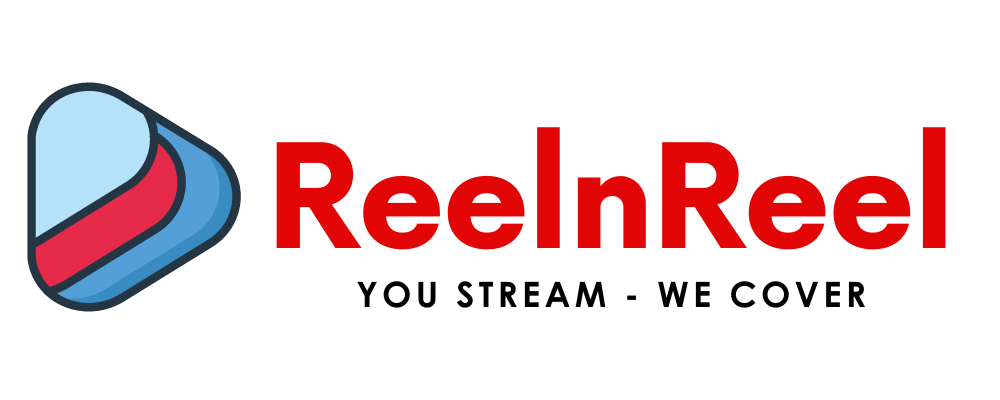YouTube continues to dominate digital content, with its robust recommendation algorithm as the gatekeeper to visibility and virality. In 2025, creators are navigating an increasingly complex system where understanding the algorithm’s mechanics can mean the difference between stagnation and success. This blog post dives into key statistics, platform dynamics, and actionable strategies that can help content creators grow their channels effectively.
YouTube Algorithm Stats
Algorithm Mechanics
The YouTube recommendation system is the engine driving most content discovery. Here’s how it works in 2025:
- 70% of total watch time is attributed to the platform’s recommendation engine, making it the most influential factor in a video’s success.
- New videos are tested with a limited audience (typically ≤500 viewers) to assess metrics like click-through rate (CTR) and average view duration. If performance is strong, the video is exposed to a broader audience.
- To decide which videos to recommend, YouTube analyzes over 80 billion behavioral signals, including clicks, watch time, likes, comments, and shares.
- The first 15 seconds of any video are critical. Viewer decisions to stay or leave within this window significantly impact whether a video gets promoted.
- Shorts operate on an “explore-exploit” model, testing content with varied audiences and analyzing swipe-away rates and replays.
Performance Metrics (User Reports)
- A CTR of 10% combined with an 8-minute average view duration is considered excellent, but even such videos can plateau if broader interest isn’t sustained.
- The viral video “Brave Detective” hit 400 million+ views, a testament to how robust the algorithm can be when aligned with engaging content.
- The algorithm increasingly favors long-form videos (15+ minutes), particularly on connected TVs, where binge-watching is more prevalent.
Platform Usage & Content Stats
Global User Base
- YouTube boasts 2.7 billion monthly active users and 122 million daily active users.
- Globally, users watch over 1 billion hours of content every day.
- Users spend 29 hours per month on the mobile app and 19 minutes per day watching YouTube.
Device & Viewing Behavior
- 40.9% of watch time comes from mobile devices.
- India leads in user count with 462–467 million users, followed by the United States (246–253M) and Brazil (142–144M).
- The user base is 54% male and 46% female. The largest demographic is 25–34-year-olds (21.7%).
Uploads & Shorts
- An astonishing 500 hours of content are uploaded every minute.
- This equates to 3.7 million videos uploaded daily and a platform that hosts between 3.9 and 14.8 billion videos.
- YouTube Shorts, the platform’s vertical video feature, sees 70–100 billion daily views.
- The most common Short length is between 30 and 40 seconds (28.8%).
Monetization & Channel Stats
Revenue & Earnings
- In the first half of 2022, YouTube generated $14.209 billion in ad revenue.
- 31% of YouTube ads are globally targeted, expanding potential audience reach.
- Channels earning $100,000 or more annually increased by 40% YoY.
- Those making over $10,000/year grew by 50% YoY.
- YouTube ads demonstrate 65% higher engagement than traditional digital ads.
Creator Milestones
- YouTube now hosts over 37 million channels, a 23% increase since 2020.
- 25% of recommended videos come from channels with <1,000 subscribers, indicating strong algorithmic support for new creators.
- One channel reported 4,800 comments from returning viewers in 28 days, showing the power of repeat engagement.
Noteworthy Video Stats
- “Baby Shark Dance” is the most-viewed video, with 15.87 billion views.
- “Despacito” follows with 8.71 billion views.
- The first-ever YouTube video, “Me at the Zoo,” has 158.4 million views.
- MrBeast’s Short “Would You Fly to Paris for a Baguette?” is the most-liked video, with 54 million likes.
- According to one study, the median YouTube video has only 41 views, illustrating the fierce competition.
- Videos can go viral after an initial cold start. One video mentioned started with 5–10 views and then became popular.
List of Tools for YouTube Algorithm Optimization for Creators
The YouTube algorithm in 2025 is more complex, behaviorally driven, and AI-enhanced than ever before. With over 70% of watch time attributed to the recommendation engine and performance metrics like click-through rate (CTR), average view duration, and retention rates playing a crucial role in content visibility, creators must leverage the right tools to stay ahead.
This article explores the most effective tools available in 2025 for optimizing content to align with YouTube’s evolving algorithm. These tools span from keyword research and metadata optimization to short-form content creation and viewer engagement analytics. Here’s a deep dive into the platforms driving YouTube growth this year.
VidIQ
Overview: VidIQ is a YouTube optimization platform offering deep insights into keyword performance, video analytics, and competitive benchmarking.
Features:
- Keyword score comparisons based on volume and competition
- Real-time video performance tracking
- Competitor research dashboards
Use Case: Ideal for finding trending, low-competition keywords and optimizing titles, tags, and descriptions to match algorithmic preferences.
TubeBuddy
Overview: TubeBuddy is a browser extension that assists creators with video SEO, bulk processing, and channel management.
Features:
- A/B thumbnail testing
- Scheduled publishing
- Tag and title suggestions
Use Case: Helps increase CTR and watch time through metadata refinement and enhanced user interface elements.
Veed
Overview: Veed offers robust AI tools for video editing, subtitles, and visual effects.
Features:
- Auto-subtitle generation
- Audio transcription
- One-click branding kits
Use Case: Improves accessibility and audience retention—two factors that YouTube rewards in its recommendation engine.
Opus
Overview: Opus is an AI-driven platform that turns long-form videos into engaging, bite-sized Shorts.
Features:
- Clip extraction based on engagement data
- Automated subtitle overlays
- Social-optimized aspect ratios
Use Case: Supports the creation of Shorts, a format increasingly prioritized by YouTube’s “explore-exploit” algorithm for discovery.
Pictory
Overview: Pictory uses AI to convert text into professional-quality videos, streamlining content production for YouTube.
Features:
- Script-to-video automation
- Voiceover and music integration
- Brand customization
Use Case: Enables rapid content production aligned with YouTube’s push for consistent uploads.
Pikzels
Overview: Pikzels is an AI tool that crafts compelling thumbnails essential for high CTR.
Features:
- Design automation
- A/B testing integration
- CTR prediction modeling
Use Case: Optimizes thumbnails for visual appeal and algorithmic favorability.
In video
Overview: A template-based video editor tailored for both Short and long-form content.
Features:
- Library of transitions and effects
- Stock footage and audio
- Script integration
Use Case: Streamlines production workflows for high-frequency publishing schedules.
Fanfuel
Overview: A YouTube growth platform focusing on audience analytics and promotional strategies.
Features:
- Viewer sentiment analysis
- Promotion tracking
- Engagement heatmaps
Use Case: Improves engagement metrics (likes, comments, shares), directly impacting recommendation rankings.
Scrip AI
Overview: An AI-powered scriptwriting tool optimized for viewer retention and SEO.
Features:
- Hook-driven script templates
- Keyword inclusion automation
- Tone customization
Use Case: Increases average watch time and retention, top ranking factors for the algorithm.
HeyGen
Overview: HeyGen creates high-quality AI-generated avatars and voiceovers.
Features:
- Multilingual voice synthesis
- Avatar customization
- Studio-quality output
Use Case: Boosts content professionalism, contributing to longer viewer sessions and higher satisfaction scores.
Cliplama
Overview: Cliplama automates the generation of Shorts and social clips.
Features:
- Emotion-detection-based scene selection
- AI trimming and effects
- Platform-specific templates
Use Case: Boosts Shorts discovery and retention metrics.
Videotok
Overview: Focused on Shorts creation, Videotok aligns with YouTube’s micro-content strategy.
Features:
- Viral pattern recognition
- Sound sync automation
- Viewer drop-off prediction
Use Case: Increases initial engagement for Shorts, encouraging broader algorithmic distribution.
Submagic
Overview: AI-based tool for auto-captioning and subtitle enhancements.
Features:
- Real-time multilingual support
- Font and style presets
- Subtitle timing sync
Use Case: Improves accessibility and global engagement.
Orange AI
Overview: A full-stack AI platform for YouTube strategy, SEO, and editing.
Features:
- Channel audit tools
- Personalized content recommendations
- Trend forecasting
Use Case: Supports holistic growth through data-backed decisions.
CreatorML
Overview: Predicts video performance using machine learning algorithms.
Features:
- Title/thumbnail performance predictions
- Engagement forecasting
- Content similarity mapping
Use Case: Enables predictive optimization before publishing.
Morningfame
Overview: An analytics platform for performance diagnostics and keyword planning.
Features:
- Personalized recommendations
- Visibility score tracking
- Upload cycle suggestions
Use Case: Guides creators on best practices to improve ranking.
Tubics
Overview: YouTube-focused SEO platform for metadata and performance tracking.
Features:
- Keyword opportunity finder
- Real-time SEO scores
- Video optimization checklist
Use Case: Increases discoverability through technical and semantic SEO.
Keywordtool.io
Overview: Powerful keyword research tool designed for YouTube search.
Features:
- Long-tail keyword suggestions
- Search volume and trend data
- YouTube autocomplete integration
Use Case: Improves search rankings and visibility through more innovative keyword use.
Canva
Overview: Design software for graphics and thumbnails.
Features:
- Thumbnail templates
- Drag-and-drop editor
- Brand kit integration
Use Case: Enhances first impressions through compelling visuals.
Social Blade
Overview: An analytics dashboard is used to track YouTube channel growth.
Features:
- Subscriber growth charts
- Real-time view stats
- Comparative channel benchmarks
Use Case: Monitors the health of engagement over time.
TrendSpottr
Overview: Trend detection platform for real-time topic discovery.
Features:
- Emerging topic alerts
- Viral hashtag prediction
- Sentiment analysis
Use Case: Helps creators ride the wave of trending topics before they peak.
Ahrefs
Overview: General SEO tool adapted for YouTube keyword intelligence.
Features:
- Keyword difficulty scores
- Traffic estimates
- SERP competitor analysis
Use Case: Refines SEO strategy to gain visibility in search results.
YTCockpit
Overview: SEO tool specifically designed for YouTube.
Features:
- Tag analysis
- Niche competitiveness scores
- Video rank tracking
Use Case: Optimizes metadata to support algorithm-driven visibility.
NapoleonCat
Overview: Social media management tool that includes YouTube support.
Features:
- Comment moderation
- Automated response templates
- Scheduling dashboard
Use Case: Maintains channel activity and engagement.
Flintzy
Overview: Video promotion platform that boosts real viewer engagement.
Features:
- Campaign analytics
- Targeted reach options
- Real-time reporting
Use Case: Improves video performance in the initial testing phase.
Prodvigate
Overview: YouTube Ads-powered promotion tool for real views and growth.
Features:
- Campaign targeting by interest or location
- Analytics dashboard
- Budget optimization tools
Use Case: Supports algorithmic push via ad-driven engagement.
YouTube Data API v3
Overview: Develop a tool for accessing YouTube analytics and video data.
Features:
- Retention curve analysis
- Custom dashboards
- Content lifecycle tracking
Use Case: Powers custom growth strategies through granular data access.
Google Trends
Overview: Trend tracking tool across global search behavior.
Features:
- Topic comparison
- Real-time popularity metrics
- Regional filters
Use Case: Aligns content topics with real-world interest curves.
BigQuery
Overview: Google Cloud’s warehouse tool for advanced analytics.
Features:
- Structured data storage
- SQL query engine
- Real-time streaming support
Use Case: Empowers advanced creators to model viewer behavior and predict retention patterns.
Hootsuite Listening
Overview: Social monitoring tool for tracking brand mentions and sentiment.
Features:
- Keyword alerts
- Competitive sentiment dashboards
- Cross-platform integration
Use Case: Feeds content strategy with external audience feedback insights.
Mastering YouTube in 2025 requires more than creativity; it demands strategic use of AI, analytics, and automation. Whether you’re a solo creator or a brand manager, these tools will help you decode YouTube’s algorithmic preferences, from CTR optimization to Shorts engagement. Staying competitive means staying informed, consistent, and data-driven. These 30 tools are your toolkit for success.
Recommendations for Creators
Success on YouTube requires more than just good content. It demands strategic alignment with the platform’s algorithm. Here are some actionable tips:
Timing
- Post between 6–9 PM on Wednesdays to capture peak traffic and engagement.
Content Strategy
- Start videos with a strong hook in the first 15 seconds to maximize retention.
- Face-reveal and human-centric content tend to perform better.
- Consistency is key: posting every 3 days, especially for Shorts, helps build momentum.
Optimize for Algorithm Priorities
- Focus on high CTR (click-through rate): compelling thumbnails and titles matter.
- Ensure strong average view duration: keep your audience engaged throughout.
- Increase session duration: create content that leads viewers to watch more videos on your channel.
- For Shorts, minimize the swipe-away rate and aim for replays.
Final Thoughts
YouTube’s algorithm in 2025 is more innovative, faster, and more competitive than ever. With billions of videos and users, creators need more than just creative talent—they need data-backed strategies. Understanding how the algorithm works, staying consistent, and engaging audiences with high-quality content is essential for success.
Whether you’re a budding creator or a seasoned YouTuber, these insights can help you decode the algorithm and chart a path toward meaningful, sustainable channel growth.
Stay consistent. Stay smart. And above all, stay creative.
Frequently Asked Questions (FAQs)
How does the YouTube algorithm work in 2025?
The algorithm tests new videos with a small audience using behavioral signals like CTR, view duration, and retention. If the performance is strong, the video will be scaled to broader audiences.
What is the role of the recommendation system on YouTube?
YouTube’s recommendation engine drives 70% of watch time, making it the primary factor in content discovery and visibility.
What performance metrics impact YouTube video success the most?
Key metrics include click-through rate (CTR), average view duration, audience retention, swipe-away rate (for Shorts), and replays.
Why are the first 15 seconds of a video so important?
Viewer decisions to continue or exit during this period significantly influence how the algorithm ranks and promotes the video.
What is the average view duration that YouTube favors?
An average view duration of 8 minutes or more combined with a 10%+ CTR is considered excellent for growth in 2025.
Do long-form videos perform better on YouTube in 2025?
Yes. YouTube increasingly favors videos longer than 15 minutes, especially on connected TVs, where binge-watching is common.
How many hours of video are uploaded to YouTube daily?
Roughly 500 hours of content are uploaded every minute, totaling 3.7 million videos daily.
What are the most essential tools for YouTube growth in 2025?
Top tools for optimization, editing, and strategy include VidIQ, TubeBuddy, Opus, Pikzels, Submagic, CreatorML, and Orange AI.
How does YouTube Shorts fit into the algorithm in 2025?
Shorts are tested using an “explore-exploit” model, with metrics like swipe-away rate and replays influencing visibility.
How often should creators post content for algorithmic advantage?
Creators should post consistently, ideally every 3 days, especially for Shorts to maintain momentum and algorithmic favor.
What is the best time to upload videos on YouTube?
The recommended posting time for maximum engagement is between 6–9 PM on Wednesdays.
What types of content perform best on YouTube?
Human-centric videos, face reveals, and content that starts with a strong hook typically perform better due to stronger emotional engagement.
How can creators increase their CTR on YouTube?
Designing compelling thumbnails, writing curiosity-driven titles, and using tools like Pikzels and TubeBuddy for A/B testing and CTR predictions.
Why is viewer session duration essential for growth?
Session duration shows that your content encourages viewers to watch more videos on your channel, which the algorithm rewards.
Does YouTube’s algorithm support smaller channels?
Yes. 25% of recommended videos come from channels with fewer than 1,000 subscribers, proving that the algorithm still favors strong content over size.
What are the most common YouTube demographics in 2025?
The largest demographic is 25–34, 21.7% of users. The user base is 54% male and 46% female.
What’s the current daily view count of YouTube Shorts?
YouTube Shorts attract 70–100 billion daily views, showing their significance in the platform’s ecosystem.
What are the most used tools for Shorts optimization?
Tools like Opus, Cliplama, Videotok, and InVideo are widely used to create and optimize Shorts for algorithmic promotion.
How does YouTube reward accessibility and localization?
Videos with auto-captions, multilingual support, and inclusive design using tools like Submagic and Veed rank better globally.
How can predictive AI tools help with YouTube’s strategy?
Platforms like CreatorML and Morningfame use predictive analytics to forecast engagement, helping creators fine-tune content before publishing.




